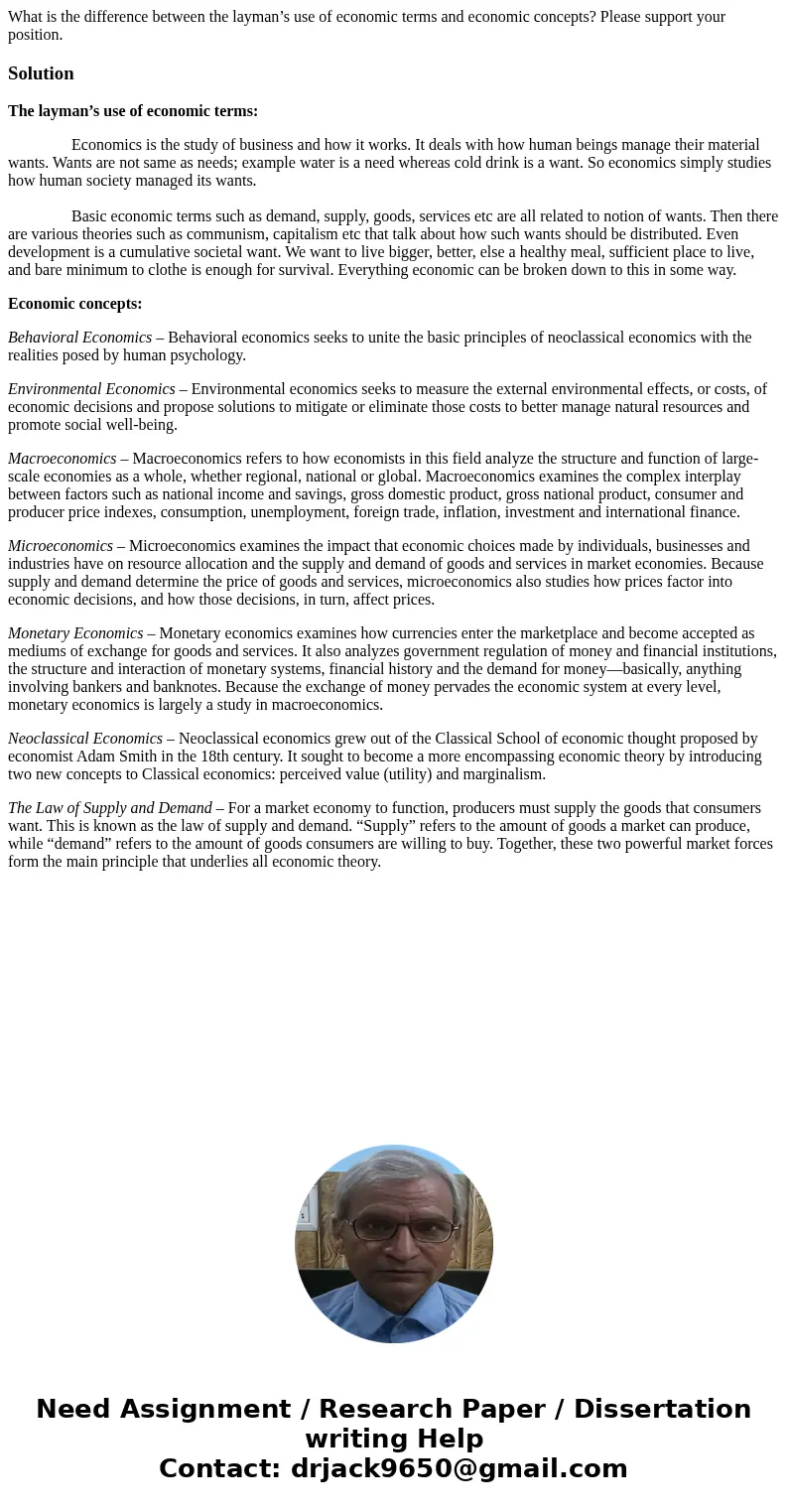What is the difference between the laymans use of economic t
What is the difference between the layman’s use of economic terms and economic concepts? Please support your position.
Solution
The layman’s use of economic terms:
Economics is the study of business and how it works. It deals with how human beings manage their material wants. Wants are not same as needs; example water is a need whereas cold drink is a want. So economics simply studies how human society managed its wants.
Basic economic terms such as demand, supply, goods, services etc are all related to notion of wants. Then there are various theories such as communism, capitalism etc that talk about how such wants should be distributed. Even development is a cumulative societal want. We want to live bigger, better, else a healthy meal, sufficient place to live, and bare minimum to clothe is enough for survival. Everything economic can be broken down to this in some way.
Economic concepts:
Behavioral Economics – Behavioral economics seeks to unite the basic principles of neoclassical economics with the realities posed by human psychology.
Environmental Economics – Environmental economics seeks to measure the external environmental effects, or costs, of economic decisions and propose solutions to mitigate or eliminate those costs to better manage natural resources and promote social well-being.
Macroeconomics – Macroeconomics refers to how economists in this field analyze the structure and function of large-scale economies as a whole, whether regional, national or global. Macroeconomics examines the complex interplay between factors such as national income and savings, gross domestic product, gross national product, consumer and producer price indexes, consumption, unemployment, foreign trade, inflation, investment and international finance.
Microeconomics – Microeconomics examines the impact that economic choices made by individuals, businesses and industries have on resource allocation and the supply and demand of goods and services in market economies. Because supply and demand determine the price of goods and services, microeconomics also studies how prices factor into economic decisions, and how those decisions, in turn, affect prices.
Monetary Economics – Monetary economics examines how currencies enter the marketplace and become accepted as mediums of exchange for goods and services. It also analyzes government regulation of money and financial institutions, the structure and interaction of monetary systems, financial history and the demand for money—basically, anything involving bankers and banknotes. Because the exchange of money pervades the economic system at every level, monetary economics is largely a study in macroeconomics.
Neoclassical Economics – Neoclassical economics grew out of the Classical School of economic thought proposed by economist Adam Smith in the 18th century. It sought to become a more encompassing economic theory by introducing two new concepts to Classical economics: perceived value (utility) and marginalism.
The Law of Supply and Demand – For a market economy to function, producers must supply the goods that consumers want. This is known as the law of supply and demand. “Supply” refers to the amount of goods a market can produce, while “demand” refers to the amount of goods consumers are willing to buy. Together, these two powerful market forces form the main principle that underlies all economic theory.

 Homework Sourse
Homework Sourse